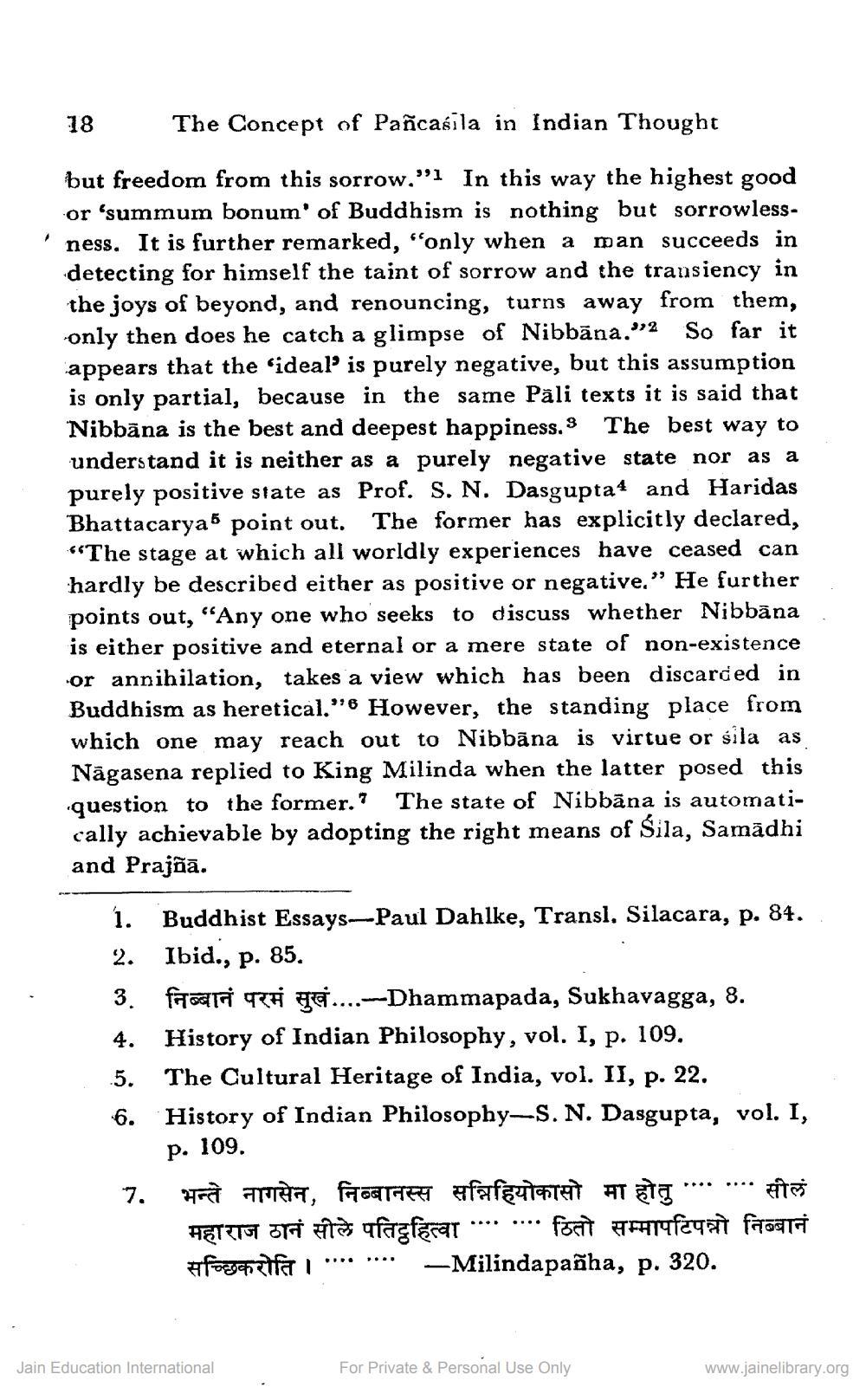________________
18
The Concept of Pañcasila in Indian Thought
but freedom from this sorrow,"] In this way the highest good or 'summum bonum' of Buddhism is nothing but sorrowlessness. It is further remarked, "only when a man succeeds in detecting for himself the taint of sorrow and the transiency in the joys of beyond, and renouncing, turns away from them, only then does he catch a glimpse of Nibbāna."2 So far it appears that the 'ideal' is purely negative, but this assumption is only partial, because in the same Pāli texts it is said that Nibbāna is the best and deepest happiness. The best way to understand it is neither as a purely negative state nor as a purely positive state as Prof. S. N. Dasgupta4 and Haridas Bhattacarya5 point out. The former has explicitly declared, “The stage at which all worldly experiences have ceased can hardly be described either as positive or negative." He further points out, "Any one who seeks to discuss whether Nibbāna is either positive and eternal or a mere state of non-existence or annihilation, takes a view which has been discarded in Buddhism as heretical."6 However, the standing place from which one may reach out to Nibbāna is virtue or sila as Nāgasena replied to King Milinda when the latter posed this question to the former.? The state of Nibbāna is automatically achievable by adopting the right means of Sila, Samādhi and Prajñā.
1. Buddhist Essays-Paul Dahlke, Transl. Silacara, p. 84. 2. Ibid., p. 85. 3. ffari i qe....Dhammapada, Sukhavagga, 8. 4. History of Indian Philosophy, vol. I, p. 109. 5. The Cultural Heritage of India, vol. II, p. 22. 6. History of Indian Philosophy–S. N. Dasgupta, vol. I,
p. 109. 7. HAR FMAA, foartet afafutateT AT ETT **** **** sito
महाराज ठानं सीले पतिदहित्वा .... .... ठितो सम्मापटिपन्नो निब्बानं #forgettfart i ""* "*" –Milindapaõha, p. 320.
Jain Education International
For Private & Personal Use Only
www.jainelibrary.org




